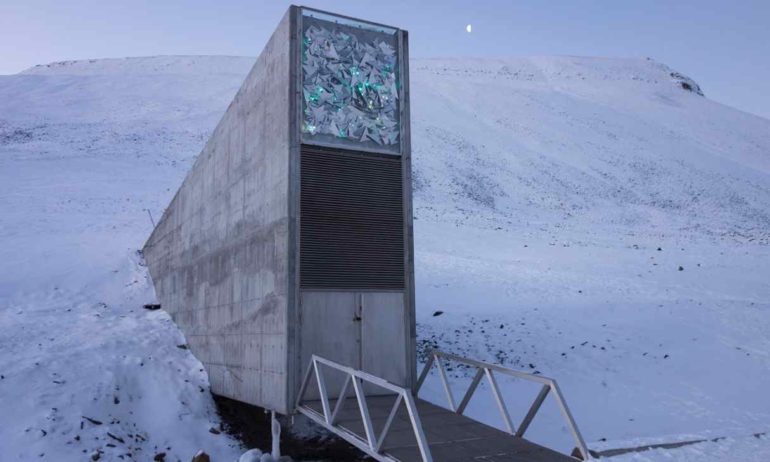The Crop Trust works to conserve crop diversity and genetic variety for generations to come. Part of this effort includes the world’s largest collection of seeds in storage at the Global Seed Vault in Svalbard, a Norwegian archipelago in the Arctic Ocean. The Trust hopes to create a global system of seed collection to cultivate food security for everyone.
Food Tank had the opportunity to speak with Brian Lainoff, Partnerships and Communications Officer at the The Crop Trust.
Food Tank (FT): How do you contribute to creating a better food system?
Brian Lainoff (BL): Food security depends on crop diversity.
An increasing population means we must increase food production, as we cannot count on adding arable land. Historically, half of the increase in crop yields has come from higher yields through genetic improvement: breeders identify useful genes in existing varieties of food plants and recombine them to develop new varieties that are more productive, more nutritious, and more resistant to stresses like higher temperatures or less water. The raw material for such improvement is the genetic diversity of crops.
We know that conserving the vast diversity within crops globally is the only way to guarantee that farmers and plant breeders will have the raw material needed to adapt to whatever the future brings. And while securing the world’s food supply will require much work beyond crop diversity conservation—such as further advances in crop science, building efficient markets, and reducing the waste of food—none of this can be effective if the genetic base of our food supply is lost.
Our mission is to ensure the conservation and availability of crop diversity for food security worldwide.
FT: What is a project, program, or result you are most proud of?
BL: Over the next decades, the world is expected to experience higher average temperatures and lower and more variable rainfall in many places. The yields of many crops are predicted to fall significantly in many parts of the world as a result. Given that demand will increase, adapting agriculture to climate change is arguably the most urgent challenge of our time. A critical step to prepare for a changing climate is to ensure that the crops feeding humanity are more resistant and resilient to the vagaries of the climate, as well as new pests and diseases.
The Crop Trust has embarked on a long-term effort to collect, conserve, and use the wild relatives of crops for climate change adaptation. It aims to identify those wild crop varieties that can be described as missing from existing crop collections, most likely to offer diverse value in making agriculture more productive under climate change, and most endangered. This diversity will then be collected from the wild by national conservation programs and maintained in genebanks; evaluated for useful traits and prepared for use in crop improvement (pre-breeding) programs; and made available globally through their inclusion in pertinent information systems.
FT: What are your goals for this year and beyond?
BL: The goal of the Crop Trust is to establish, fund, and manage a global system for the conservation of crop diversity held in genebanks. Crop collections require constant curation and care, as even brief disruptions can expose plant genetic material to the risk of permanent loss. The ex situ conservation of crop diversity is by its nature a long-term, never-ending task. Only long-term, sustainable financial support from an endowment fund can secure a global conservation system that is too important to leave to chance.
The Crop Trust is building a Crop Diversity Endowment Fund of US$850 million, which will generate some US$34 million in annual income. This will safeguard the diversity of the major food crops of the world in genebanks, and thereby the basis for food security.
The Crop Trust is committed to build its endowment over the next five years. By 2016, an international donors conference will be asked to add US$330 million to the current endowment fund of US$170 million, bringing this to US$500 million so as to protect all of the key international crop collections. By 2018, an additional US$350 million will be sought so as to reach US$850 million and safeguard a wider spectrum of the world’s agricultural diversity found in national collections and in the Svalbard Global Seed Vault.
FT: In one sentence, what is the most important thing eaters and consumers can do today to support a more sustainable food system?
BL: Demand diversity.
FT: How can individuals become more involved in your organization?
BL: Individuals can sign up for our newsletter,&nnbsp;contribute to the conservation of crop diversity on our website, or share our video Securing Our Food, Forever.
Download the 2015 Good Food Org Guide HERE.















